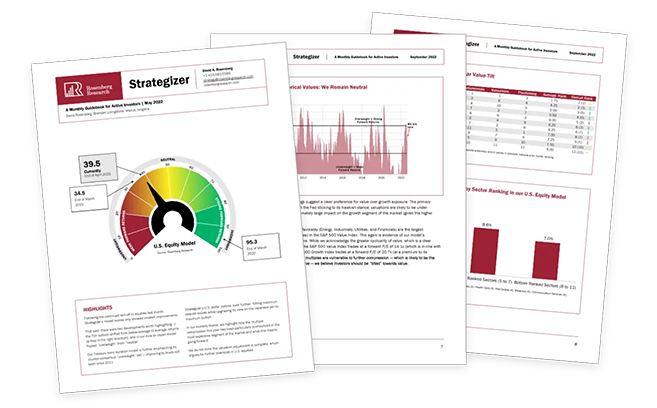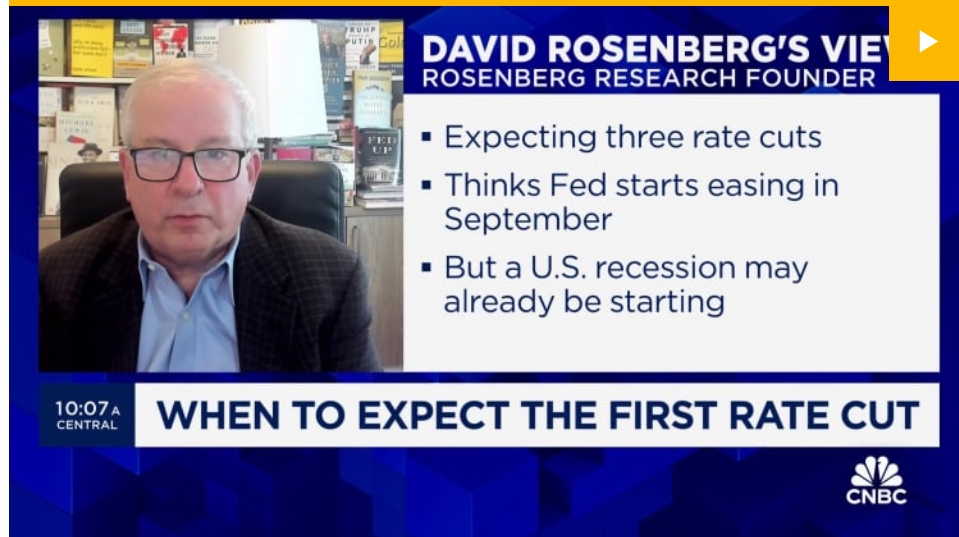
Macroeconomic Analysis Techniques for Investment Consultants
June 5, 2024
Navigating the investment landscape requires more than just a keen eye for numbers; it demands a deep dive into the world of macroeconomic analysis. This comprehensive approach uses a mix of quantitative and qualitative analysis, scenario planning, and risk assessment to decode the complexities of the market. The real kicker? A robust understanding of macroeconomic principles not only allows for an assessment of a nation’s economic health but also offers foresight into market movements, unlocking opportunities and sidestepping potential pitfalls along the way. So, let’s unravel the details.
Understanding the Influence of Macroeconomic Factors on Investments
The investment journey is akin to steering through a sea of unpredictability, where each wave of economic change demands skillful navigation. As an investment consultant, grasping the macroeconomic factors shaping the investment environment is non-negotiable. Interest rates, inflation, economic growth, government policies, and global trade dynamics play pivotal roles in the investment decision-making process. Grasping how these factors intertwine and affect various sectors empowers you to curate investment strategies that optimize client returns.
Consider this scenario: you’re advising a client keen on the technology sector. Without considering the broader economic landscape, you might limit your analysis to the sector’s internal dynamics. However, integrating macroeconomic insights could reveal significant external influences, such as the impact of rising interest rates or a slowdown in global economic growth on consumer electronics demand.
Employing macroeconomic analysis proactively identifies potential risks and opportunities, guiding strategic adjustments. Monitoring economic indicators like GDP growth, unemployment rates, and consumer sentiment offers a window into the economy’s overall health and trajectory, enabling you to position your clients advantageously.
While some may caution against an overreliance on macroeconomic factors, suggesting potential for market timing missteps or a fixation on fleeting trends, the key lies in achieving a balance. Warren Buffett’s investment philosophy, which marries value investing with an awareness of broader economic conditions, exemplifies this balance. By incorporating macroeconomic understanding into your investment strategy, you enrich your analysis with a comprehensive backdrop, enhancing decision-making and risk management.
Imagine macroeconomic factors as the tides governing the investment ocean. Navigating these waters without acknowledging their force could leave you adrift in a sea of uncertainty. Conversely, understanding these tides can guide you toward serene harbors or propel you on waves of success.
Grasping the macroeconomic undercurrents that influence investments lays the groundwork for adept investment consultancy. Through examples and analogies, we’ve illustrated how macroeconomic analysis enriches investment strategy, fostering informed decision-making. Up next, we delve deeper into the pivotal role of macroeconomic analysis in refining investment consultancy.
Importance of Macroeconomic Analysis in Investment Consultancy
In the realm of investment consultancy, understanding macroeconomic analysis is not just an advantage—it’s essential. This deep dive into the economic factors at play equips us with the necessary insights for informed decision-making and effective risk management. Through the lens of macroeconomic analysis, we unlock an understanding of how broader economic forces shape investment landscapes, guiding our strategic thinking.
Broadening our perspective to consider the entire economic environment allows us to see beyond the confines of individual companies or sectors. It’s about understanding the forest, not just the trees. Monitoring indicators like GDP growth, inflation rates, and employment trends offers a pulse on the economy’s overall health, informing our recommendations on which sectors are poised for growth and which may face challenges.
But it’s not just about gathering data. The art of macroeconomic analysis lies in interpreting how various factors—consumer behavior, interest rates, and fiscal policies—converge to impact investments. For instance, central bank interest rate adjustments have a direct bearing on the valuation of stocks and bonds. Recognizing these dynamics enables us to tailor investment strategies that are responsive to the current economic climate.
The real value of macroeconomic analysis comes from its ability to inform our investment strategies, ensuring they are not only well-informed but also perfectly aligned with the prevailing economic conditions. While the nuances of individual investments remain critical, it is the broader macroeconomic perspective that ultimately lays the groundwork for effective, strategic investment planning.
Examples of Commonly Used Macroeconomic Indicators
Navigating the investment landscape requires a keen understanding of macroeconomic indicators, which are essential tools for assessing the health and direction of the economy. These indicators offer valuable insights, helping investment consultants evaluate potential impacts on investment portfolios and make informed decisions.
Gross Domestic Product (GDP) stands as a pivotal gauge of economic activity, measuring the total value of goods and services produced within a country. Its fluctuations signal economic expansions or contractions, guiding consultants in identifying sectors ripe for investment or caution.
The inflation rate is another crucial indicator, reflecting the pace at which prices for goods and services rise, affecting purchasing power. Understanding inflation dynamics allows consultants to adjust investment strategies, ensuring portfolios are positioned to maintain or enhance their real value over time.
The unemployment rate offers insights into the labor market’s health, influencing consumer spending and, by extension, corporate earnings and market trends. High unemployment may prompt a shift towards more defensive investment postures, whereas declining rates might indicate burgeoning opportunities.
It’s important to recognize that no single indicator paints a full economic picture. Effective investment consulting involves synthesizing data from a range of indicators, each offering unique insights into economic conditions. This holistic approach enables consultants to craft nuanced investment strategies, navigating the complexities of the market with informed precision.
As we continue to explore macroeconomic analysis in investment consultancy, we’ll delve into the methodologies consultants use to gather and interpret this vital economic data, ensuring their advice is grounded in a comprehensive understanding of the economic landscape.
Quantitative and Qualitative Methods for Analyzing Macroeconomic Data
In the realm of investment consulting, the art of dissecting macroeconomic data is critical. Consultants wield both quantitative and qualitative methodologies to illuminate the state of economies, thereby shaping investment strategies that are responsive to the ever-evolving market dynamics.
Regression analysis stands out as a quintessential quantitative tool. This approach delves into historical data, unearthing patterns between economic indicators and market performance. Such insights are invaluable; for instance, a demonstrated link between GDP growth and equity market returns can significantly inform future investment directions.
Conversely, qualitative analysis brings a different dimension, focusing on the subjective factors that quantitative metrics might miss. Through interviews, surveys, and expert analyses, consultants glean insights into market sentiments, consumer behaviors, and even geopolitical climates. This method enriches the understanding of economic undercurrents that numbers alone can’t capture.
Critics often highlight the risks of leaning too heavily on quantitative data, cautioning against the oversight of crucial socio-political or behavioral factors. This critique underscores the necessity of a balanced approach that harmonizes the empirical rigor of quantitative analysis with the depth and context provided by qualitative inquiry.
Picture quantitative analysis as the framework of a building, offering structural integrity and measurable benchmarks. However, it’s the qualitative insights that infuse this framework with context and relevance, akin to the architectural details that transform a structure into a livable space. Together, these methods equip investment consultants with a panoramic view of the economic landscape, enabling the formulation of nuanced, informed investment strategies.
As we progress, the focus shifts to the critical role of data interpretation in investment research. This next step is pivotal, as it’s not merely about collecting data but understanding its story and implications. By skillfully interpreting macroeconomic indicators, consultants can unearth strategic opportunities, guiding their clients with precision in the complex world of investment. This journey into data interpretation awaits, promising to unlock deeper insights into macroeconomic analysis for investment consultancy.
Techniques for Forecasting Macroeconomic Trends
Navigating the unpredictable terrain of global economies, investment consultants employ a variety of forecasting techniques to predict macroeconomic trends, serving as navigators for clients amidst the market’s ebb and flow. In the ever-evolving landscape of finance, the precision of these forecasts is paramount, drawing from an arsenal of established methodologies.
Regression analysis offers another lens through which consultants can view the economic future, analyzing the intricate dance between macroeconomic indicators and market entities. This method might reveal, for example, the nuanced relationship between interest rate adjustments and stock market fluctuations, offering a predictive compass for future investment landscapes.
Scenario analysis emerges as a particularly versatile tool, inviting consultants to explore a multitude of economic futures. By mapping out various scenarios based on conceivable shifts in GDP, inflation, or geopolitical dynamics, consultants can arm their clients with strategies resilient across a spectrum of future economic climates.
However, the realm of macroeconomic forecasting is marked by inherent uncertainties. Unpredictable forces—be they geopolitical upheaval, natural calamities, or groundbreaking technological innovations—can swiftly redirect economic currents, challenging even the most meticulously crafted forecasts. Acknowledging this, consultants must remain agile, their foresight perpetually honed by the latest economic indicators and global events.
Envisioning the investment consultant as the captain of a ship navigating through open waters, forecasting techniques are the navigational tools that anticipate the coming waves and winds. Yet, the sea remains unpredictable, and the true test of navigation lies in the ability to swiftly recalibrate the course in response to unexpected storms, ensuring the journey towards investment success continues unimpeded.
In this complex dance of prediction and adaptation, the role of investment consultants extends beyond mere analysis; they become essential guides in a world of financial uncertainty. As we delve deeper into the significance of analyzing macroeconomic trends for sound investment decision-making, the importance of a consultant’s expertise and adaptability come sharply into focus, highlighting their pivotal role in charting a course through the economic landscape.
Consultant’s Role in Macroeconomic Investment Analysis
In the realm of investment consultancy, our mandate extends far beyond simple advice; it’s about crafting bespoke strategies informed by macroeconomic analysis, tailored to each client’s unique investment landscape. By assimilating a broad spectrum of economic factors—from fluctuating interest rates and governmental policy shifts to the intricate web of international trade—we refine investment portfolios to align with the overarching economic climate.
Our expertise enables us to dissect the broader economic environment’s influence on diverse asset classes and sectors, guiding strategic decisions on investment allocation, diversification, and risk management. This meticulous approach is aimed at sculpting investment outcomes that resonate with our clients’ aspirations.
Consider a nuanced analysis of interest rate trends. We translate these insights into actionable advice, forecasting potential impacts on bond yields and equity markets. Similarly, by evaluating the ramifications of government policies and international trade dynamics, we pinpoint sectors poised for growth or vulnerable to emerging challenges. This holistic perspective furnishes our clients with a robust framework to discern both the risks and opportunities prevalent across the market spectrum.
Our commitment transcends the delivery of generic advice; we endeavor to provide strategies that are meticulously woven from the fabric of comprehensive macroeconomic analysis. This commitment equips our clients with the clarity and confidence to navigate the complexities of the market, making informed decisions that are in concert with their financial goals.
At the heart of our consultancy lies a deep-rooted belief in the transformative power of macroeconomic analysis—it’s the bedrock upon which we base our strategic recommendations. Armed with this analytical prowess, we are poised to guide our clients through the ever-evolving financial landscape, steering them towards achieving their investment objectives with precision and insight.
Are you looking to refine your macroeconomic analysis techniques as an investment consultant? Start your FREE trial with Rosenberg Research today.
Rosenberg Research ©2024 All Rights are Reserved



